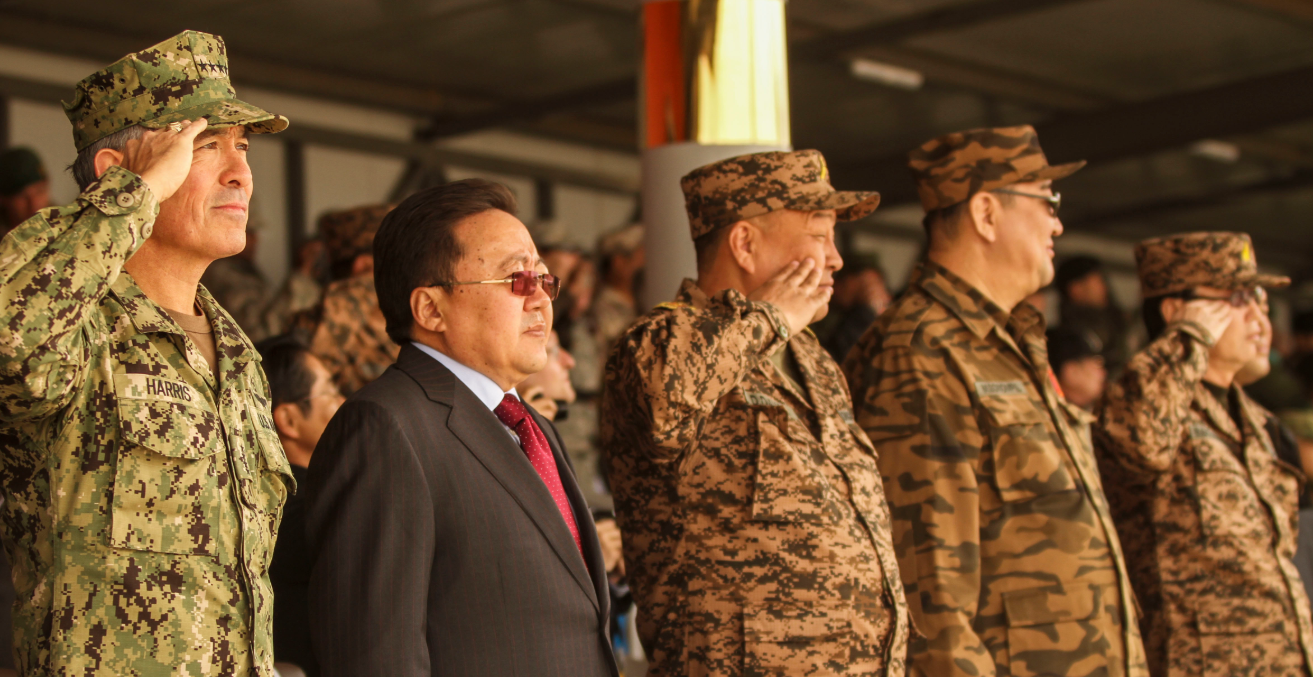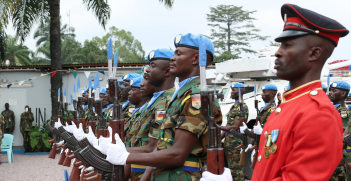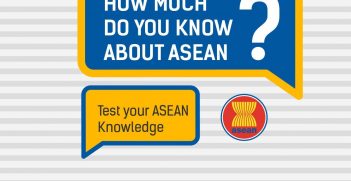South East Asian powers and contributions to peacekeeping operations: UN-ASEAN partnering for peace?

Regions are becoming increasingly central in both the implementation and claims to legitimacy of UN peacekeeping operations. It is necessary to understand how the form of a regions affect the nature and fruits of cooperation.
In 2008, in the UN Secretary-General published a report on the relationship between the UN and Regional Organisations, highlighting that UN-regional partnerships should develop to entail wider capacity building activities, define and refine the responsibilities of regions and the UN in both Chapter VIII and non-chapter VIII activities, and perform functions in support of disarmament and mediation. This claim was reaffirmed in both during, and in the wake of, the 2015 High-Level report on peacekeeping, which explicitly called for the UN to develop stronger partnerships in Peacekeeping between the UN and regional structures in order to develop more responsive and effective operations. As the report states: “A bold new agenda is required to build a strong global-regional framework to meet these challenges through responsible and principled strategic partnerships.”
Regional engagements with peacekeeping are both functional and collaborative, and normative. Hence there is an urgent need to understand how regions cooperate with the UN in peacekeeping.
All too often the “global south” in terms of peacekeeping partners is seen as synonymous to the 54 African states and their collective regional fora: ECOWAS and the African Union (AU). This equivalence is understandable and justifiable as, considered as a regional group, Africa’s 54 states collectively contribute significantly to UN peacekeeping, and the AU has an institutionalised and formalised structure for coordinated action. However, it should be noted that the highest numbers of peacekeepers from individual states still come from India, Bangladesh, and Pakistan and that the number coming from individual African states fit the same range as those from Southeast Asia.
This article contributes to filling this lacuna by focusing on the contribution of the Asia-Pacific and more specifically, the ASEAN states to the development of an UN-Regional partnership in peacekeeping. In exploring this area, it demonstrates that in line with debates on regionalism more generally, ASEAN is seen to be an “incomplete” or “unrecognised” region, because of its form of soft regionalism and its internal “cooperative competition” and the difficulty the UN has in developing a working partnership structure. Does this mean that ASEAN is not and cannot be a partner in UN peacekeeping? And what does this mean for the transfer of knowledge and expertise from troop-contributing states into the UN structures?
If ASEAN eventually becomes a UN partner in peacekeeping, this will necessitate a two-pronged approach to engagement by the UN: functional coordination and ideational spill-overs that advance at the speed and rhythm of the region. At the same time, the UN bureaucracy will need to consider in earnest how it engages with troop-contributing states and utilises the information derived from engagement. However, what appears more likely is that increasing effective functional co-existent processes with the UN will emerge with the region in the areas to address conflict, humanitarian and disaster experiences. Enhanced cooperation will develop in the provision of troops and in training of UN peacekeepers in the region to be deployed externally. But, the limiting factor to developing partnerships will be the divergence in strategic goals in what peacekeeping should and can achieve. In this respect, there appear to be more prospects for partnership between troop contributors and the host state in these operations (as in the case of Cambodia and East Timor).
Peacekeeping and regional organisations
UN peacekeeping faces numerous challenges, including budgetary constraints, appropriate resources and troop contributions, necessary linguistic and other skills among the pool of deployable peacekeepers, challenges to the legitimacy of operations, and the ability to generate or facilitate a lasting or positive peace. Among the factors identified as having the potential to mitigate or even mollify some or all of these challenges has been to place greater emphasis on regions as the practitioners in peacekeeping operations.
The UN has identified that, in some conflicts, the involvement of “home” regions or contiguous regions are contributing factors to the legitimacy of UN peacekeeping operations. Regions diminish the view that “external” forces are imposing solutions on a group or state. In order to create or facilitate a lasting peace, local actors must be participants in the peace process. As a result, given the potential for greater similarities of language, culture, identity and religion, a preference for regional ownership of peacekeeping operations has emerged.
The UN clearly identifies the need to engage more locally, but it is woefully inadequate and its approaches are insufficient in meaningfully engaging local actors. In promoting engagement with local populations, peacekeepers are increasingly involved in activities including preventing conflict, promoting human rights, empowering women, protecting civilians, and building the rule of law. In the achievement of these goals, peacekeepers have been increasingly involved with activities that cross over with those included in providing disaster relief and humanitarian assistance.
As a result, there are two processes or logics that are important here. First, the involvement of regional organisations in peace keeping operations can increase the legitimacy of those operations by being seen by the host population as “insiders” and having “cultural similarities, a shared history.” Second, the peacekeepers’ ability to engage with the local society or host population will be through the provision of activities also associated with humanitarian assistance and disaster relief. These two elements should be mutually reinforcing as the closer cultural links to the host population should also ensure that peacekeeper activities are more efficient and effective. At this level, the functional activities on the ground are key determinants of success.
However, a potential problem with the argument that each region of the world “should be responsible for its own peacemaking and peacekeeping” is that the factors which are at the heart of this argument are ideational rather than geographical—local engagement is facilitated by cultural, linguistic, and historical affinities rather than geographic proximity. Indeed, geographic proximity can negate the positive effects of ideational factors because of tensions between regional states.
The argument herein is that the positive effects of these ideational factors are not solely benefits of engagements through proximate regional organisations, but can be derived through the deployment of troops from other regions. For example, Indonesian peacekeepers in Lebanon with a common religion were cited as being highly successful in engaging with the local population. Indeed, there is a crucial balance between having peacekeepers with varied expertise, skills, and cultures, and the coordination problems that such diversity presents. As a result, although the UN and other evaluations of peacekeeping missions have sought to focus on the importance of regions, this may be a proxy for two other processes. First, that regions through coordinated activity within the region in a variety of engagements (not least in providing HA and DR), smooth out coordination problems of diverse groups developing systems and standard practices. Second, regions being proximate to the host state may be obscuring that the significance or the crucial element is in the cultural and other affinities, which may be more likely but not uniquely provided by nearby states.
Why look at ASEAN and partnerships in peacekeeping?
It is frequently noted that the states of ASEAN have not experienced inter-state conflict between members since 1967. However, the region has been subject to serious unrest, internal armed conflict, and humanitarian crises that have been the result of both climate-induced and politically induced disasters. Despite this prevalence of conflicts, the region has only experienced the presence of peacekeepers in relation to two states: Cambodia (in the UN Transitional Authority in Cambodia) and East Timor (in INTERFET and UNTAET). However, in addition to these multilateral peacekeeping operations, the region is replete with examples of responses to conflicts and disasters that encompasses many similar activities and personnel. As a result, despite the absence of UN Peacekeeping operations (UNPKOs), the region does have a store of lessons learnt and potential to share knowledge to a wider global community.
According to the UN, partnerships have the intention of achieving three goals: increasing the legitimacy of UNPKOs; enhancing capacity and efficacy of those operations; and embedding local ownership of peace and its maintenance within communities, ensuring a people-centred approach. These actions should go beyond mere coordinated activities or cooperative ad-hoc arrangements; instead they should be based on equality between actors, a strategic objective, long-term engagements, and seek to achieve the same goals and hold the same values.
ASEAN is (or should be) emerging as an indispensable global partner. However, there remain important obstacles that need to be acknowledged in order to be overcome.
Southeast Asian states are important contributors to UN peace operations, not only through the provision of troops but also in providing niche expertise and technical support to operations and increasingly by providing locations for training. Some states in the region are already being perceived as a “provider of a niche capability,” for instance, Cambodia for mine clearing, Thailand for water purification/groundwater drilling, or Vietnam for medical services.
In 2018, ASEAN training centres became the location of UN peacekeeping training, when the department of field support inspected, approved and authorised four regional centres: Vietnam, Cambodia, Indonesia and Thailand. Although not the largest contributor to UN operations, ASEAN states have targeted their contributions to transfer their own knowledge and expertise through the UN system in an efficient way and avoid duplication of resources or expertise.
Despite the enthusiasm for peacekeeping within Southeast Asia, developments towards making the region a UN partner has been glacial. Progress seems to be trapped at the intersection of the functional cooperation producing common values and goals driven partnership. It is notable that in the most recent secretariat-to-secretariat meeting between ASEAN and the UN in Jakarta, with both the departments of Political Affairs and the DPPA in attendance, the statement produced made no reference to peacekeeping as a common endeavour. However, it is insufficient to take only the published output statements as evidence of a lack of movement towards ASEAN more fully becoming a UN partner.
What is the result of ASEAN’s expertise in relation to its agency or partnership with the UN?
In looking in detail at the nature and content of the UN-ASEAN partnership, the focus has been on preventative diplomacy, sustaining peace, and conflict prevention, rather than drawing substantive lessons from the experience of their ASEAN partner in achieving the successful transfer of knowledge from humanitarian and disaster relief activities, or in developing the region’s experience and contributions to peacekeeping missions. The functional relationship that ASEAN has with the UN regarding peacekeeping needs to be more expansive and developed in order to more effectively draw on the lessons housed within the region. However, at the level of ideas and concepts, despite the advocacy for this, these states continue to be marginalised.
Trust is an important facilitator or impeding factor for developing partnerships. Within ASEAN, the level of trust between states—particularly on issues of security—remains low. One mechanism for increasing this level of trust or enhancing coordination is by exporting some leadership and financial issues to an external body. In the case of peacekeeping, the UN can play a role generating trust between ASEAN states; enabling them to specialise without directly competing with each other, enhance their regional profile, and potentially their collective global agency.
The voice of ASEAN is at times being heard within the UN and there are valuable lessons to be garnered from this region. However, there is a need to consider what conditions of engagement need to be changed in order to more effectively transfer lessons and diversify UN partners. To enable peacekeeping to respond more successfully and remove the “institutional stickiness” around partnerships, we must utilise the “ASEAN Way in Peacekeeping” dialogue rather than coercion, local engagement, and the consensus approach.
Dr Catherine Jones is a lecturer at the University of St Andrews where she teaches on Northeast Asian international relations and the politics and development of Southeast Asia.
This is an extract from an article of the same name originally published in the Australian Journal of International Affairs and can be viewed here.





